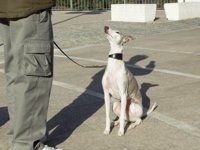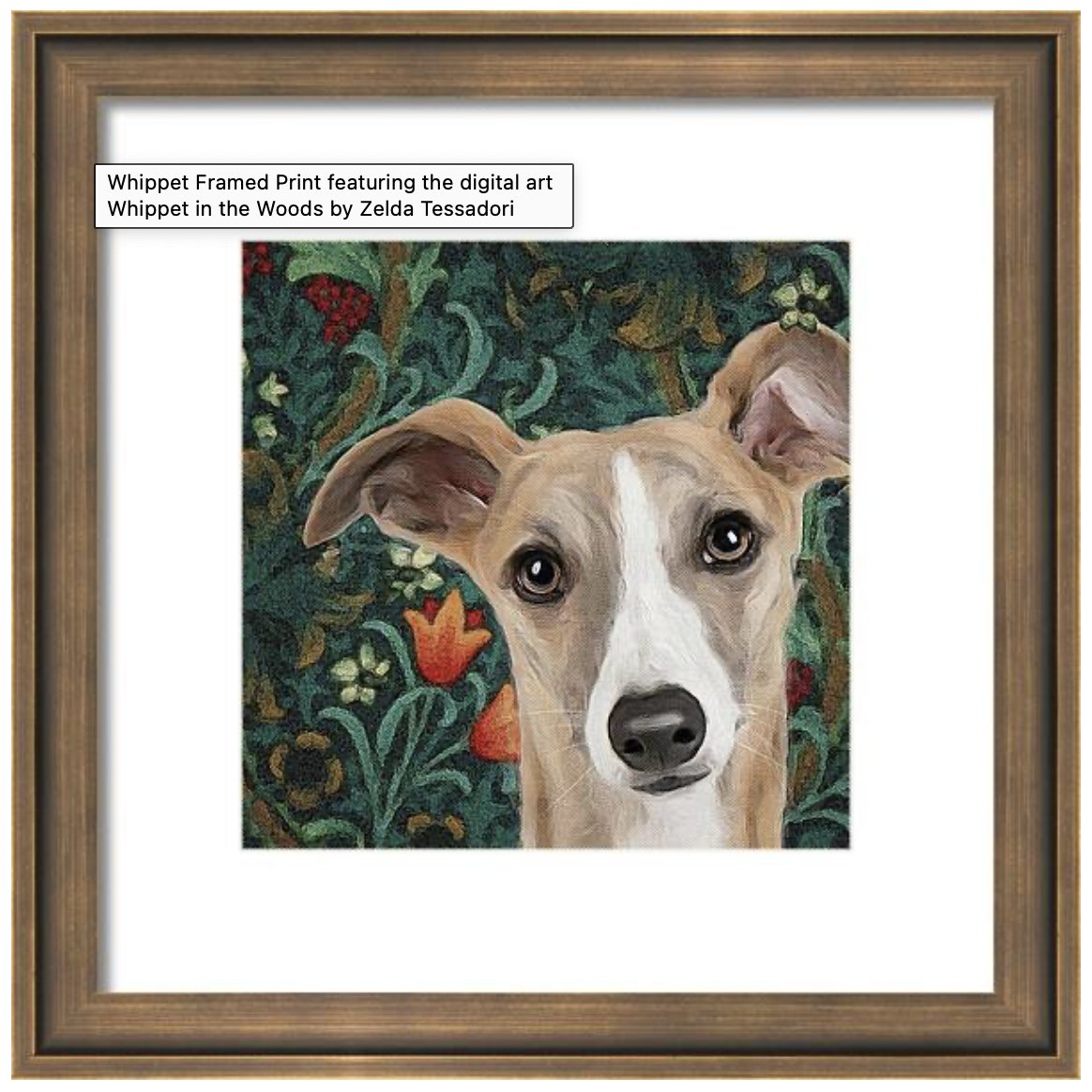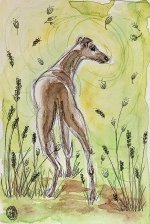Do you have a whippety question? Enter here your query or keyword.
- Home
- Whippet Puppies
- Leash Training a Puppy
Leash Training a Puppy: Turning Walks Into Moments of Connection
Leash training a puppy can be both a rewarding and challenging experience. In the early days, it may feel frustrating and time-consuming, especially when your puppy seems more interested in everything around them than in walking calmly at your side. But with patience, the right techniques, and a few irresistible incentives, leash training can become not just easier—but a way to bond deeply with your dog.
A Gourmet Approach to Leash Training

Our whippet, Lola, is a lovely little dog with a very particular problem: she is irresistibly attracted to anything she finds on the street. Leaves, tissues, food wrappers—you name it. If it’s remotely sniffable or chewable, she’s after it. For a while, it seemed like our daily walks had turned into scavenger hunts. She’d spot a discarded bit of food and make a beeline for it before I could say a word.
But this morning, I tried something different. I armed myself with a small container of my best Parmesan cheese—yes, the good stuff. I cut it into tiny, crumbly bits and tucked them into my pocket, hoping that I could turn my little garbage hound into a gourmet with refined taste.
It worked better than I expected.
As soon as we stepped outside and I gave Lola her first cheesy reward, she became immediately interested in me and, more importantly, in what I might be hiding in my pocket. Even though she had just eaten breakfast, the smell of Parmesan was more powerful than any scrap on the street.
I talked to her gently as we walked, encouraging her to stay focused on me. Every time her attention started to wander back to her old habits, I used the cue I’d been working on: “Look at me.” In my most convincing tone, I said the words and offered another tiny bit of cheese.
By the end of the walk, I didn’t even need to use food every time. Just saying “look at me” was enough to get her attention. That’s the magic of consistency and high-value rewards. It’s a technique I’ll keep using—even if it means sacrificing some gourmet cheese now and then. Hopefully, in time, Lola will forget why she ever found street rubbish so fascinating in the first place.
The Right Equipment: Collars for Leash Training a Puppy

Choosing the right collar or harness can make all the difference when leash training a puppy. A good training collar works in harmony with your cues and your dog’s learning style. I personally use a puppy training collar during our daily walks to the park. Paired with the right treats, leash training suddenly becomes a much more manageable task.
When Lola is focused on me and anticipating rewards, everything flows smoothly. But if she starts scanning the pavement for trash again, the collar gives me a gentle way to regain her attention without resorting to pulling or force.
Martingale collars are among the gentlest and most effective options for leash training a puppy. They tighten slightly when the dog pulls, providing a natural cue, but they release instantly once the tension is gone. They’re safe, comfortable, and easy to use, especially for slim-necked dogs like whippets.
Another option is the traditional dog choke collar—but only when used correctly and thoughtfully. These collars can be effective for communicating a change in direction or a need for attention, but they must never be used for punishment. A gentle touch on the leash is all it takes to guide your puppy. Pulling hard or using the collar to reprimand can damage your dog’s trust—and potentially cause physical harm.
It’s also important to remember that training collars should only be used during supervised sessions. Never leave them on an unsupervised puppy, and never allow your dog to run freely while wearing one. Training equipment is a tool for communication, not restraint.
Safety and Common Sense: Leashing a Whippet
Leash training a puppy is about more than obedience—it’s also about safety. Whippets, for example, are typically quick learners and eager to please. Many will heel and walk nicely with only minimal instruction. However, their strong prey drive, explosive speed, and complete lack of traffic awareness make them a unique challenge.
Even a well-trained whippet can forget every command in a split second if a squirrel darts across the road. That’s why it’s critical to keep them leashed in any high-traffic area, regardless of how obedient they may seem. It only takes one distracted moment to lead to a potentially tragic outcome.
A walk in the park, a sidewalk stroll, or even a trip to a café patio can be a great training environment—as long as you stay alert and maintain control. The leash becomes a lifeline, not just a tool for correction, but a symbol of your bond and your shared understanding.
Making Progress, One Walk at a Time
Leash training a puppy isn’t something that happens in a day. Some pups may take to it quickly, while others—like Lola—might need a little more encouragement (and maybe a chunk of fancy cheese). The key is to stay positive, be consistent, and make training a part of your daily routine rather than a separate, stressful task.
Celebrate the small wins. If your puppy walks five steps without pulling, that’s progress. If they check in with you when passing another dog, reward that moment. Over time, all these little victories add up to big changes in behavior.
There’s no one-size-fits-all solution, but the combination of high-value rewards, the right equipment, and a calm, encouraging tone will work wonders. Remember: leash training a puppy is not just about teaching them how to walk. It's about building a relationship, fostering communication, and learning to trust each other through every twist and turn of the sidewalk.


